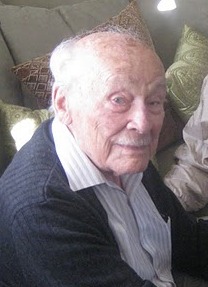Year: 2009
The Copenhagen views developed in the late Twenties as an attempt at understanding of what Hermann Weil called Schroedinger's favor of fortune. Decades later Aharonov and Bohm presented their cyclic line integral of the four-vector potential [1] as equating multiples of flux quanta h/e. It uniquely describes a quantum interferometer experiment also devised by the same duo. A couple of years later Deaver-Fairbanks [2] and Doll-Naebauer [3] confirmed the existence flux quanta, yet of size h/2e not h/e.
The AB integral is, however, pre-statistical whereas Schroedinger's process is statistical; be it of a perhaps strange non-classical species. Early on Copenhagen claimed quantum mechanics as inherently statistical, thus dismissing any pre-statistic manifestation. Experimental reality clearly says otherwise. Yet inferring a non-statistical AB integral from a statistical Schroedinger tool took AB intuitive genius.
However, unbeknown to most physicists but known to a number of mathematicians, de Rham [4] formulated in the early Thirties an existence theorem in the realm of differential topology that permits a derivation of the AB integral from first principles. Translated in the space-time language of electromagnetism, it says:
It follows from global flux conservation (Faraday's law) that there exists a field A such that dA= F and depending on the contour c, the loop integral of A then equals a multiple of a smallest topologically invariant residue r; contour c everywhere resides in domains where F=0. The Fairbanks-Doll experiments [2,3] now show r = h/2e; which, if you will, is in fact an experimental confirmation of this application of de Rham's theorem.
This completes the proof how the Aharonov-Bohm law has its own first principles confirming its independence of Schroedinger's process. It restores options of carrying on causal argument by placing AB's law first and Schroedinger as derived. In fact Schroedinger's original variational derivation of his equation can be restored in that vein.
AB's double residue [1] can now be understood from an angle of residue integration for particles moving in external E, B fields. Particles having a field-free interior trace their own field-free path; the twin space-and time trajectories now double h/2e in h/e.
It can hardly be denied that the AB integral emerges as an experimentally confirmed winner of primary quantization. The Schroedinger equation derives by injecting the AB law as replacing conditions of single valuedness. It restores Schroedinger's original derivation of his equation that was somewhat silently discarded by Copenhagen.
All this completely uproots traditional Copenhagen views. A preliminary outline of the ensuing interpretive change [5] has been delineated in BSPS volume 181. Ironically, methods of approach were commented on in reviews but interestingly not the central message of interpretive reprogramming. Since there has not been much evidence of bringing an end to this scandalous AB-Copenhagen standoff, this letter is meant to invite mature opinion on the current use of de Rham theory as doing exactly that. In fact the same theorem, applied to the D,H, field reproduces Gauss' theorem of electrostatics as well as a discreteness of the quantum of charge; anybody questioning that?
- Y. Aharonov & D. Bohm, Phys, Rev. 115. 489 (1959).
- B. S. Deaver & W. M. Fairbank, Phys. Rev. Lett. 7, 43 (1961).
- R. Doll & M. Neubauer, Phys. Rev. Lett. 7, 51 (1961).
- G. de Rham, Vari?t?s Differentiables (Paris 1955).
- E. J. Post, Quantum Reprogramming (Kluwer 1995; Springer 2005).


